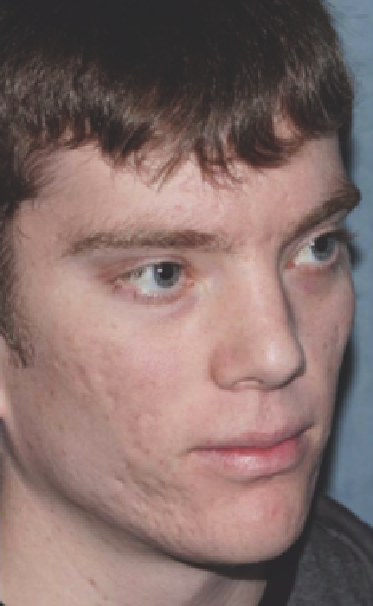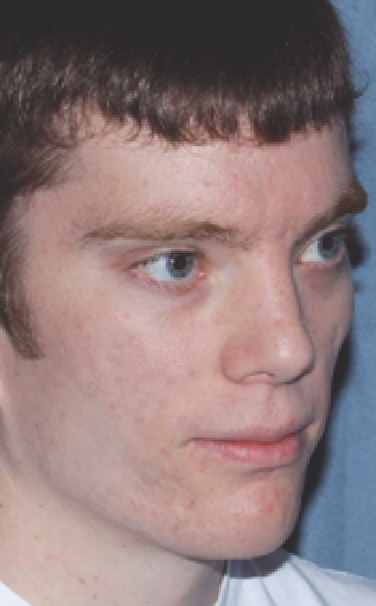Biomedical Engineering Reference
In-Depth Information
of response than that of AFR and usually requires multiple
treatment sessions (three to six) compared with one or two
with AFR. However, the lack of downtime for healing and the
potential of combining the two approaches make NAFR an
interesting option. AFR has much greater ability to tighten the
skin than NAFR devices, which correlates directly with the vol-
ume of tissue heated, or the depth and density of treatment.
Therefore, deep tissue vaporization and coagulation associated
with signifi cant density of treatment correlate to better clinical
outcome (64). However, it should be noted that the risk of
adverse reactions with AFR is not absent, with a few reports
of postoperative infection and scarring after AFL related to
anatomical location as well as appropriate densities (Figs. 9.15
and 9.16) (165-167).
Finally, the use of this promising technology to prevent
scarring postoperatively, particularly for cosmetic surgical
procedures, should become a major area of concentration
and success. Future studies with a longer follow-up and
com parative effi cacy of treatment parameters will result in an
even greater margin of safety with better clinical outcomes
(Figs. 9.17, 9.18, 9.19).
TAC is the corticosteroid most commonly used (171) and was
fi rst reported in 1960 (172). It is generally used in concentra-
tions of 10-20 mg/mL, but occasionally as high as 40 mg/mL.
Injections are typically done at 3- to 4-week intervals. It is
important to inject right into the center of the scar. Injecting
too superfi cially can result in epidermal atrophy, and injecting
too deep, especially subcutaneously, can result in long-lasting
dermal/fat atrophy.
Various authors still affi rm that IL corticosteroids are the
treatment of choice for hypertrophic scars and keloids
(173,174). Acknowledged side effects are pain with injection,
atrophy, telangiectasia, and hypopigmentation at the injec-
tion site (175). Cushing's syndrome has been reported as a
complication in pediatric patients (176-178). IL triamcino-
lone is generally successful in reducing the volume of a scar
(179). Recurrence rates of 9-50% have been reported with
the use of IL triamcinolone (180-186). A study using 3D
imaging found mean scar volume to reduce from 0.73 ±
0.701 mL at baseline to 0.14 ± 0.302 mL following monthly
IL triamcinolone (187).
However, success has not been uniform. Muneuchi et al. (179)
reported the long-term outcome of 94 patients with keloids
treated with 1-10 mg of TAC intralesionally at 4 weeks or longer
intervals. Patients received 20-30 injections over 3-5 years.
Thirty-one patients (33%) discontinued because of pain and
lack of response. Fair or better results in decreasing the size of
the keloid were seen in 40 patients (43%), but good or better
results were seen in only 25 of this group of 40 responders (27%).
This type of response is much more in line with the experi-
ence of the senior author (REF), not to mention the high rate
of atrophy, telangiectasia, and hypopigmentation. The rate of
intralesional corticosteroids
IL corticosteroid injections have been the primary treatment for
keloids and hypertrophic scars for the past 50 years. These ste-
roids are thought to decrease fi broblast proliferation, decrease
collagen synthesis as well as glycosaminoglycan synthesis and
to suppress proinfl ammatory mediators (168). Corticosteroids
inhibit collagenase by inhibiting
2-macroglobulin. If this
pathway is blocked, collagenase is elaborated, resulting in col-
lagen breakdown (169,170).
α
(
A
)
(
B
)
Figure 9.15
(
A
) Atrophic acne scars following a severe fl are of nodular/cystic acne. (
B
) One year following a single treatment with Fraxel Re:Pair using 60 mJ and
50% density.


















